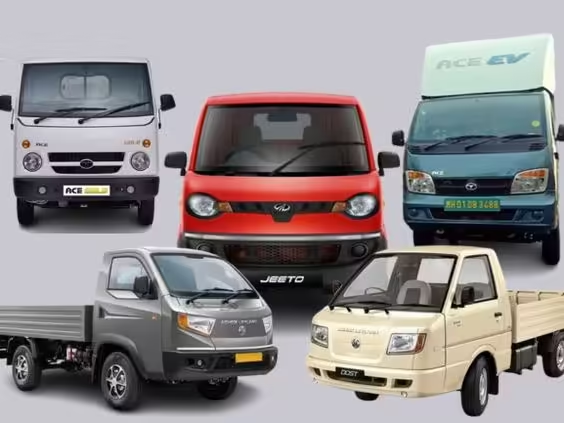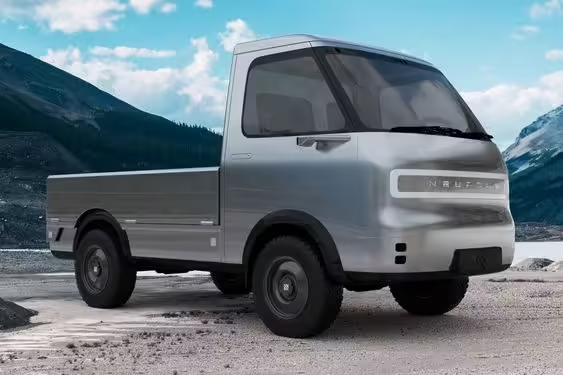
Electric vehicles (EVs) have been rapidly evolving over the past decade, revolutionizing the automotive industry and redefining the future of transportation. While passenger cars have led the charge, utility trucks are now joining the electrification movement, poised to transform industries ranging from construction to logistics. This shift towards EV utility trucks is not just a trend; it’s a pivotal change driven by environmental concerns, technological advancements, and the need for efficient, low-emission vehicles. This blog post explores the future of EV utility trucks and the profound impact they will have on businesses and the environment.

The Rise of EV Utility Trucks
Utility trucks, including pickups, work vans, and heavy-duty trucks, are the backbone of many industries, performing essential tasks such as transporting goods, servicing infrastructure, and supporting construction projects. Traditionally powered by internal combustion engines (ICE), these vehicles have been known for their high emissions and significant fuel consumption. However, with global emissions regulations tightening and businesses seeking greener alternatives, the push towards electrification has never been stronger.
Key Drivers of Electrification:
- Environmental Regulations: Governments worldwide are setting aggressive targets to reduce carbon emissions. Many cities are implementing low-emission zones, and countries are planning to ban the sale of new ICE vehicles by the 2030s. This regulatory pressure is pushing manufacturers to innovate and invest in electric trucks.
- Technological Advancements: Advances in battery technology, such as solid-state batteries and improved energy densities, are making electric trucks more viable. These developments are leading to longer ranges, faster charging times, and increased payload capacities, which are critical for utility vehicles.
- Cost Efficiency: Although the upfront cost of EV utility trucks is still higher than their ICE counterparts, the total cost of ownership (TCO) is becoming increasingly competitive. Lower fuel costs, reduced maintenance expenses, and government incentives make electric trucks a financially sound investment over their lifespan.
- Corporate Sustainability Goals: Many companies are setting ambitious sustainability goals to reduce their carbon footprints. Incorporating EV utility trucks into their fleets aligns with these objectives, enhancing their environmental credibility and meeting stakeholder expectations.

The Current State of EV Utility Trucks
The market for EV utility trucks is expanding rapidly, with several major automakers and startups introducing innovative models. Companies like Ford, Rivian, Tesla, and General Motors are leading the charge with electric pickups and work vans designed for commercial use. Here’s a look at some notable examples:
- Ford F-150 Lightning: Ford’s electric version of the iconic F-150 pickup offers impressive towing capabilities, advanced technology, and an extended range, making it an attractive option for both consumers and businesses.
- Rivian R1T: Rivian’s electric truck is designed with adventure and utility in mind, featuring a unique gear tunnel for extra storage and a robust all-wheel-drive system, catering to both outdoor enthusiasts and worksite needs.
- Tesla Cybertruck: Known for its futuristic design and high performance, the Cybertruck promises strong durability, impressive payload capacity, and Tesla’s network of Superchargers for convenient long-distance travel.
- General Motors’ Electric Work Vans: GM is developing electric work vans under the BrightDrop brand, focusing on last-mile delivery and commercial applications. These vans are tailored to meet the needs of logistics companies, offering reduced operating costs and zero emissions.
The Future Outlook: Trends and Innovations
The future of EV utility trucks looks promising, with several trends and innovations set to shape the industry. Here are some key developments to watch:
1. Improved Battery Technology
Battery performance remains the linchpin of electric vehicle success. The ongoing development of solid-state batteries, which offer higher energy density, faster charging, and longer lifespans, will significantly enhance the capabilities of EV utility trucks. These advancements will enable longer driving ranges, making electric trucks viable for heavy-duty applications and long-haul routes.
2. Charging Infrastructure Expansion
A robust charging infrastructure is essential for the widespread adoption of EV utility trucks. Governments and private companies are investing heavily in expanding fast-charging networks across highways, urban centers, and industrial zones. Innovations such as megawatt charging systems (MCS) designed for heavy-duty trucks are expected to reduce charging times significantly, ensuring that utility trucks can spend more time on the road and less time plugged in.
3. Vehicle-to-Grid (V2G) Technology
Vehicle-to-Grid (V2G) technology allows electric vehicles to interact with the power grid, sending electricity back during peak demand periods. For utility trucks, this feature can be particularly valuable in construction sites or emergency situations, where the vehicle can serve as a mobile power source. This bidirectional energy flow not only adds functionality to the trucks but also supports grid stability, contributing to a more resilient energy system.

4. Autonomous and Connected Features
Autonomous driving technology is making its way into EV utility trucks, enhancing safety, efficiency, and operational control. Connected trucks can provide real-time data on vehicle performance, optimize route planning, and monitor maintenance needs, reducing downtime and enhancing fleet management. Companies can leverage these smart technologies to improve logistics, reduce costs, and streamline operations.
5. Modular and Customizable Designs
Future EV utility trucks will likely offer modular designs that allow businesses to customize vehicles based on specific needs. Whether it’s adding specialized equipment, adjusting payload configurations, or incorporating off-road capabilities, modularity will enable businesses to maximize the utility of their EV trucks.
Challenges Ahead
While the future of EV utility trucks is bright, several challenges remain. High upfront costs, limited charging infrastructure in remote areas, and battery performance in extreme weather conditions are some hurdles that need to be addressed. Additionally, the supply chain for critical materials like lithium, cobalt, and nickel must be secured and sustainably managed to support large-scale battery production.
Conclusion
The electrification of utility trucks is not just a trend; it is an inevitable evolution driven by the need for cleaner, more efficient transportation solutions. With rapid technological advancements, expanding charging infrastructure, and growing support from governments and businesses, EV utility trucks are set to become the new standard in the industry. As the world moves towards a greener future, these vehicles will play a crucial role in reducing emissions, lowering operational costs, and redefining how industries operate.
For businesses, investing in EV utility trucks means not only meeting regulatory demands and sustainability goals but also gaining a competitive edge in a rapidly changing market. The future of EV utility trucks is one of innovation, resilience, and sustainability—a future that is already beginning to take shape on our roads today.

Leave a Reply